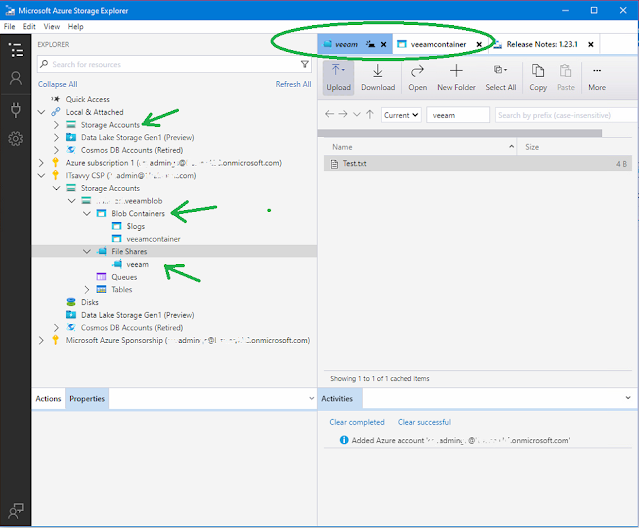Veeam Backup and Azure Storage Blob
Support your company better with offsite backups
What if your servers and data was captured ransomware? What do you do? Your backups have also been locked by ransomware and recovery would only be available by an offsite protected copy of your backup data. To better support your company, maintain an offsite copy of your backups.
Veeam not only gives it's admins a way to support their company better by having a secure and reliable method to recover from server failures, virtual servers or physical own hardware servers, but also lets you keep a copy in the cloud.
Chances are you are already using Azure for email through Microsoft 365 online exchange, so access to having a datastore available to have your company survive a crisis is already there. You may have to expand your subscription to include the required amount of storage , but that requires very little effort to do.
Creating storage for Veeam to offsite backups is straight forward. It's a generic generation 2 blob. Nothing fancy, nothing special. Standard performance because it's an offsite backup and won't require high end speed because it's not live data. The blob is all defaults. You'll just have to give the storage account a name and create a new resource group, and of course select your subscription. The process is simple on Azure. Take note of the key generated for the blob, because that has to be entered into the Veeam configuration. Follow this Veeam guide, it worked for my company:
https://helpcenter.veeam.com/docs/backup/vsphere/azure_repository_name.html?ver=110
Once you have the Azure storage setup, again it is a default storage blob, you need for Veeam configuration:
To add Microsoft Azure Blob storage, do the following:
To add Microsoft Azure Blob storage, do the following:
Not mandatory but after completion, Microsoft has a tool called Microsoft Storage Explorer. the tool works great to have a a view of all your storage containers and even aces them without a browser.
Microsoft storage explorer could be downloaded from here, login is not required to download from Microsoft.
https://azure.microsoft.com/en-us/features/storage-explorer/
The tool is not required to access, support, and manage your storage accounts , containers, etc. but can be used to support and manage the setup and offer further insight that's not so quickly attainable using only browser access to Azure or using even the Azure management console tool.

